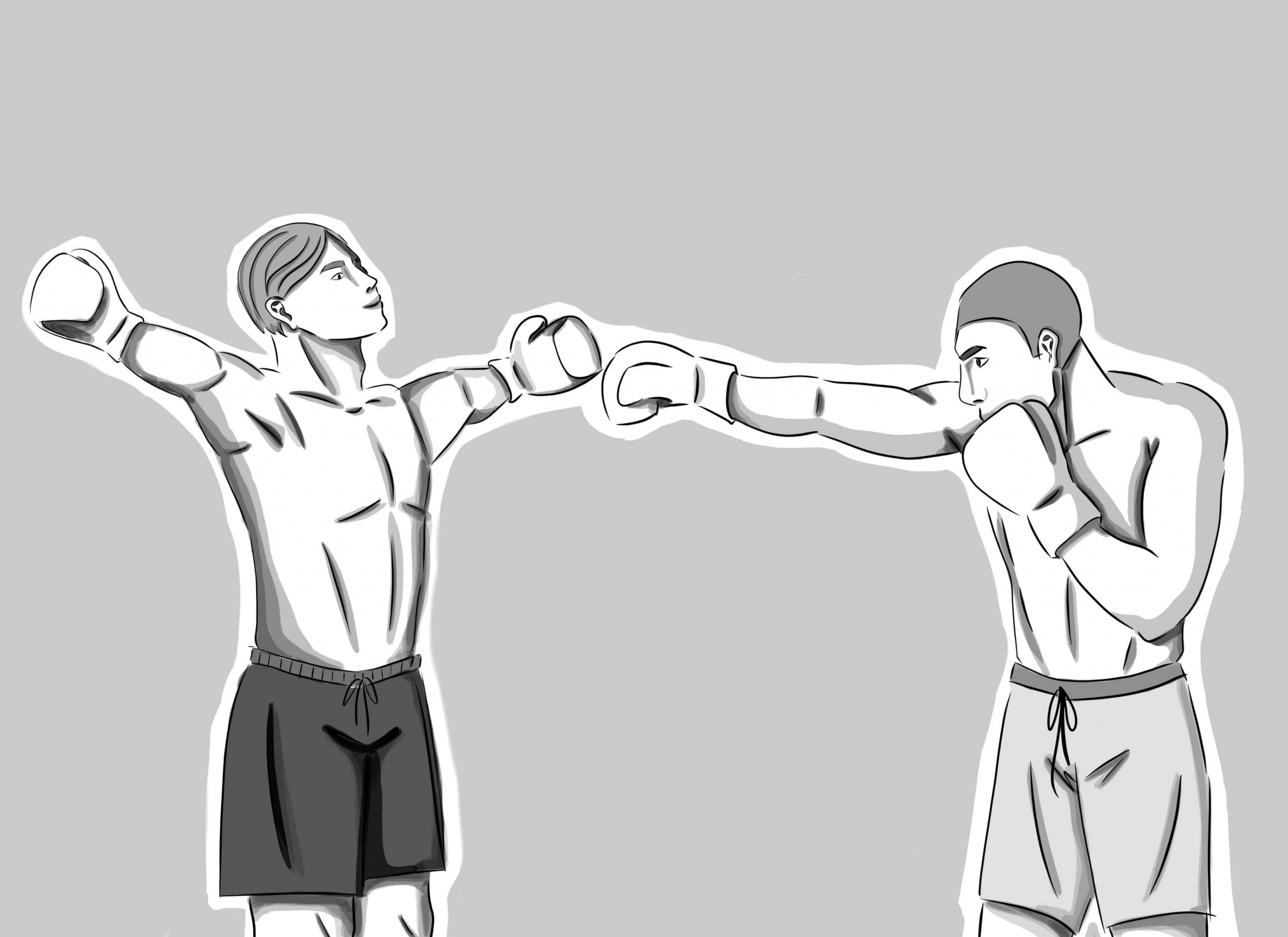In the world of sports, athletes encounter and experience pain as a part of their day to day training and competition. Sore muscles, torn ligaments, and broken bones are necessary evils – negative experiences that harden bodies in a process known as body callusing. Athletes are expected to hide their responses to pain, and the ability to control pain is considered heroic.
“There is a dominant medical conceptualization of pain and this has silenced other nonmedical ways of understanding pain,” said Kristina Smith, a graduate student in the Faculty of Kinesiology and Physical Education at the University of Toronto. “As a result, we have become focused on how we can endure, overcome, and manage pain.”
In her Master’s thesis, Smith challenges predominant understandings of pain by arguing that pain is not always negative: athletes can use pain to strengthen their social bonds and networks.
To understand how athletes experience pain, Smith turned to mixed martial arts (MMA), a hyper-explosive combat sport in which competitors inflict as much damage as possible using a combination of Muay Thai, Sambo, Brazilian Jiu Jitsu, and kickboxing. Smith followed seven athletes over four months, collecting qualitative data through interviews, video diaries, observation, and participation. She studied both males and females, amateurs and professionals.
“Video diaries allowed me to see and hear the different ways in which pain was talked about when I was not around, and gave fighters the opportunity to talk about their training experiences, social relationships, pain / injuries in private, comfortable settings,” Smith explained. “By being a participant in MMA and training with the fighters, I was able to gain a better understanding of their world and what they went through in training… [B]y using interviews, I was able to speak with fighters at length about their social relationships and experiences with pain.”
Altogether, the multi-pronged approach allowed her to present a more complete picture of how fighters deal with pain. In her analysis, Smith adopted a social constructivist approach to examine how mixed martial artists experience pain, and how social relationships contribute to these experiences of pain.
Her research highlights how pain is a social and cultural phenomenon. “[H]ow we understand pain and the meanings we develop about our pain experiences are shaped by our social and cultural backgrounds – our relationships with other people, past experiences, values, beliefs, attitudes, morals,” she said.
Given that sports are often a platform on which masculinity is imagined and enacted, the experience of pain is inextricably tied with notions of gender. Men are socialized to act tough, and to demonstrate less sensitivity towards other people’s emotions.
In her thesis, Smith described how “fighters perceived their ability to control their emotions / emotional pain as imperative to their success as fighters, and perhaps, on a deeper level, important to their successful achievement of masculine statuses within the context of MMA.” She concluded that pain management was shaped by socially constructed notions of masculinity.
Her findings also emphasize the centrality of pain in mixed martial arts. Far from being avoided, pain is something fighters actively choose to experience. Smith explained, “Fighters are not pushing pain away, they are voluntarily choosing to encounter / have pain within MMA, however, this is done through codes and rules; the ways in which fighters voluntarily [choose] to have pain is very controlled within MMA.”
In mixed martial arts, fighters consent to experiencing pain at the hands of their training partners and coaches. Through iterative cycles of consent and restraint, fighters learn how to be better training partners and teammates.
In addition, pain makes people incredibly vulnerable, and this shared vulnerability creates intimacy between training partners and between athletes and coaches. “Athletes relate to one another through pain, through sharing pain, and they also [relate] to themselves through pain,” Smith said. “[W]hen fighters are going through intense physical suffering there is nothing for them to hide behind; they reveal themselves as they are, vulnerable and suffering.”
Moving forward, athletes and coaches need to acknowledge and to engage in open discussions about pain. Through open communication, athletes can develop a greater sense of self-awareness, and a better understanding of their mental and physical limits. The ultimate goal is to create a more supportive environment for athletes, without normalizing pain or trauma.
“Once people have experienced physical pain, emotional pain, or some sort of trauma, they will be forever changed… As a result, we cannot keep encouraging athletes to hide or ignore their pain. We need to encourage athletes to start their healing process and move forward with their new understanding of themselves, accepting that they have suffered,” Smith said.
She added, “Everyone experiences pain, but people’s responses to pain, and how they deal with pain vary greatly.”


